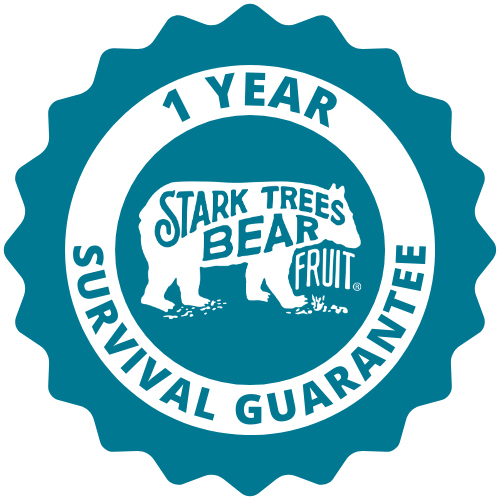Bartlett Pear Tree
Description
Characteristics of the Bartlett Pear Tree
The Bartlett pear, known as the Williams pear in parts of Europe, is the best-selling pear variety in the world. It is a European pear, as opposed to an oriental hybrid or an Asian pear. The fruit is enjoyed both for eating fresh and cooking.
These fruit trees came to the United States from Europe during the 1790’s, when it was grown and sold by a man in Massachusetts named Enoch Bartlett. From that time, the pear bore his name in the United States. Bartlett pears are grown commercially in California and the Pacific Northwest.
The tree has fluffy, white blossoms that bloom mid to early spring, and it is fast growing. The pears grow green on the tree but ripen to a light golden yellow.
Homesteaders will enjoy preserving an abundance of fruit. These lovely pears can be canned, dehydrated, and frozen. The trees are easy to grow and will start to produce fruit in four to six years.
Using Bartlett Pears
Bartlett pears are favored for their sweet taste and fragrance. They are also lovely to look at, with the classic pear shape, and hints of red behind the deep yellow skin. Pair the fresh fruit with cheese and wine for a tantalizing appetizer or with meats and sausages for a charcuterie.
These pears are also preferred for canning because of the ability of the fruit to hold its shape and retain its sweet flavor. Chefs and home cooks enjoy the firm quality of the pear, using it for baking desserts, such as crisps and pies. It is a valuable addition to savory dishes, including stuffings and roasted meats.
Pears are a good source of fiber and are rich in copper and vitamins C and K.
Growing the Bartlett Pear Tree
Bartlett pear trees require full sun and enough cold weather in the winter to receive 800 chill hours. They require cross pollination. Click here to find great pollinator options. They also need well drained soil. See below for more soil characteristics and USDA hardiness zones.
Buy a Bartlett pear tree to enjoy fresh pears and bake tasty desserts, as well as preserve an abundance of delicious fruit.
Note: Not suitable pollinator for Seckel pear trees.
Survival Guaranteed!


Since 1816, Stark Bro’s has promised to provide customers with the very best fruit trees and plants. It’s just that simple. If your trees or plants do not survive, please let us know within one year of delivery. We will send you a free one-time replacement, with a nominal shipping fee of $9.99. If the item in question is not available, we can issue a one-time credit to your account equaling the original product purchase price or issue you a refund. Read more about our warranty policy.
Characteristics
| Bloom Color | White |
| Bloom Time | Early - Mid |
| Chill Hours | 800 |
| Fruit Color | Yellow |
| Fruit Size | Large |
| Hardiness Zone Range | 5 - 8 |
| Pollination | Pollinator Required |
| Ripens/Harvest | Late August |
| Shade/Sun | Full Sun |
| Soil Composition | Loamy |
| Soil Moisture | Well Drained |
| Soil pH Level | 6.0 - 7.0 |
| Taste | Spicy |
| Texture | Smooth, Firm |
| Years to Bear | 4 - 6 |
Size & Spacing
Mature Size
| Standard | 18 - 20' tall x 12 - 13' wide |
| Semi-Dwarf | 12 - 15' tall x 9 - 11' wide |
| Dwarf | 8 - 10' tall x 6 - 7' wide |
Recommended Spacing
| Standard | 18 - 20' |
| Semi-Dwarf | 12 - 15' |
| Dwarf | 8 - 10' |
Zone Compatibility
Pollination
This variety requires another one for adequate pollination.
Related Assortments
Available in these money-saving assortments
We bundle many of our popular products in assortments with other items that compliment each other. Plus, when you purchase an assortment, you save money compared to buying each item individually!
Tools & Supplies
Planting & Care
Learn all about how to grow pear trees in The Growing Guide. An entire section of our website dedicated to your growing success.


 Options
Options




















